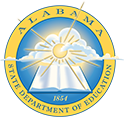This lesson is meant to be used as a culminating project after students have learned about different biomes. Students will start out by separating different plants into their respective biomes based on their characteristics. Then students will create a species that is adapted to survive in an assigned biome.
This lesson was created as part of the 2016 NASA STEM Standards of Practice Project, a collaboration between the Alabama State Department of Education and NASA Marshall Space Flight Center.
